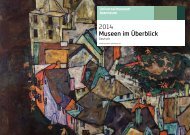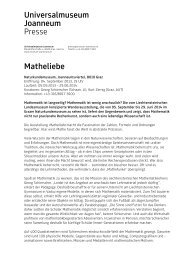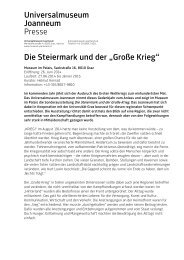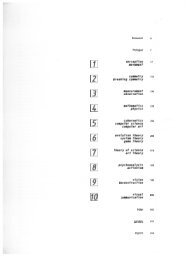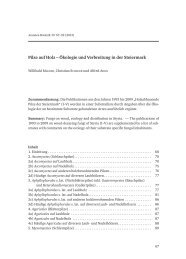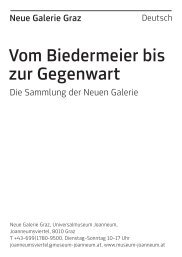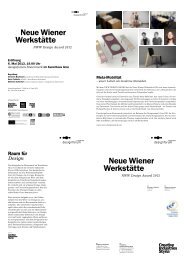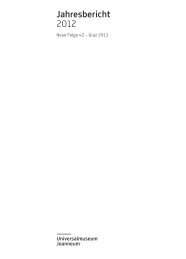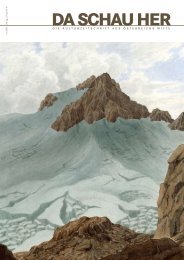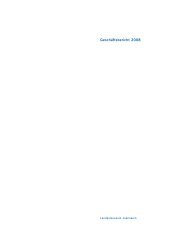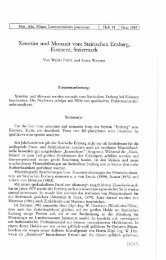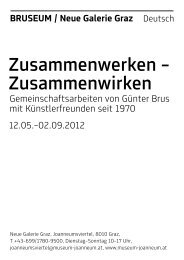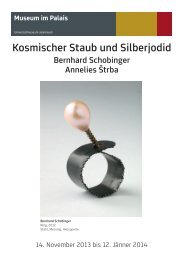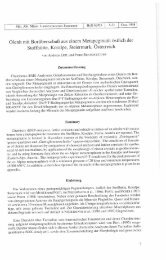Austrian Sculpture Park
Austrian Sculpture Park
Austrian Sculpture Park
You also want an ePaper? Increase the reach of your titles
YUMPU automatically turns print PDFs into web optimized ePapers that Google loves.
The Nature of the <strong>Austrian</strong> <strong>Sculpture</strong> <strong>Park</strong><br />
When sculpture and design get in touch they undergo a reaction<br />
and develop an inter-relation; in the course of time the<br />
story they tell is subject to constant changes. The garden as<br />
a creation by humans but at the same time picture of the ever<br />
growing nature corresponds with the sculptures which are<br />
exposed to weather, embedded in the landscape to which in<br />
turn they respond. The terminology of contemporary sculpture<br />
ranges from abstract sculpture to common household objects,<br />
from anthropomorphic figurations to objects of utility.<br />
The dialogue between sculpture and its location is to render<br />
this terminology visible, i.e. make statements about art,<br />
society, its conflicts and dreams, and at the same time create<br />
a space for encounter.<br />
Timm Ulrich’s Tanzende Bäume (dancing trees) and Mario<br />
Terzic’s Arche aus lebenden Bäumen (ark made of living<br />
trees) – the start of the project – are the most recent projects<br />
of park sculptures. Oswald Oberhuber’s sculpture mounted on<br />
a wall relegates to the fact that since minimal art a sculpture<br />
cannot only stand on the floor, but can also be mounted on<br />
a wall and thus enters a dialogue with paintings. The dialogue<br />
inherent in art, as between painting and space, can also be<br />
enlarged by a dialogue between the forms of art and nature,<br />
as in the sculptures by Fritz Hartlauer and Jörg Schlick.<br />
Standing opposed to one another, they are dealing with the<br />
rules of form, algorithms and growth. To this same category<br />
belong sculptures by Christa Sommerer and Michael Kienzer.<br />
Works of so-called old masters are placed on the landscape<br />
of stairs, facing the sky, representing the pantheon.<br />
The might of this place also heightens Heimo Zobernig’s<br />
tower at the entrance of the sculpture park or the Bicycle<br />
sculpture by Susana Solano. The same goes for a sculpture<br />
by Werner Reiterer, inflating and deflating in its dell, and the<br />
cushion by Hans Kupelwieser placed between hedges as well<br />
as Peter Weibel’s work, where the globe can be experienced as<br />
a suitcase.<br />
Machines of motion like cars (Erwin Wurm), ships (Michael<br />
Schuster), sails (Martin Walde) and aeroplanes (Nancy Rubins)<br />
talk to us about the fate of apparatuses, their failure and<br />
downtime, dreams of perfect society and technology and turn<br />
the landscape into a see or an airport. In corres-pondence<br />
with the afore mentioned are Heinz Gappmayr’s cues to not<br />
yet visible and no longer visible depending on the viewer’s<br />
position; in Yoko Ono’s cross into which a nail can be hammered<br />
and Jeppe Hein’s water sculpture the interaction<br />
between visitor and work of art is once more enhanced.<br />
Thus the <strong>Sculpture</strong> <strong>Park</strong> is used as a platform to initiate the<br />
dialogue with contemporary sculpture and make its language<br />
more easily understandable.<br />
Elisabeth Fiedler, Head of the <strong>Austrian</strong> <strong>Sculpture</strong> <strong>Park</strong><br />
Peter Weibel, Chief Curator of the <strong>Austrian</strong> <strong>Sculpture</strong> <strong>Park</strong>



